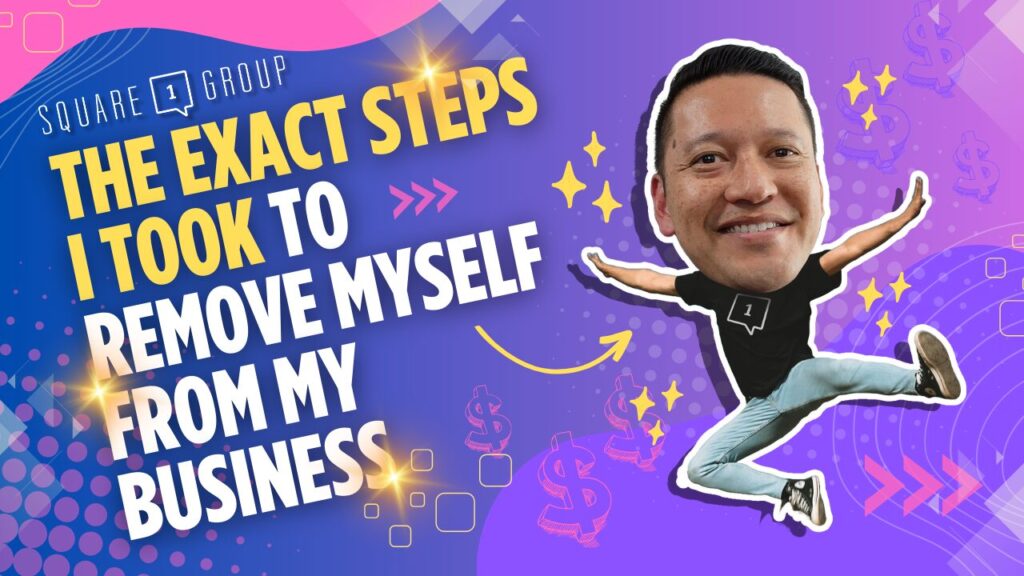
Hey there fellow solopreneur! Just like you know how overwhelming it is to do everything alone. I was once in your shoes. I was in the thick of it. I was juggling marketing, customer service, and other business tasks. Trust me, it can burn you out pretty fast. But guess what? I found a way out and want to share my journey with you.
This blog will show you the steps I took to step back from my business. It now runs smoothly without my micromanagement. This guide is for you. It can help if you want more freedom, a better work-life balance, or to focus on the bigger picture. Let’s dive in!
Before I could step away, I had to learn the main challenges solopreneurs face. Here are the three big ones that held me back:
Running a business alone can make you feel it’s all your responsibility. You’re wearing all the hats, and it’s exhausting. The constant juggling causes burnout. It makes it hard to scale your business or think about the future.
I remember feeling like I was on a hamster wheel, running fast but getting nowhere. Every time I checked something off my to-do list, two more tasks popped up in its place. I was busy, but I wasn’t productive.
I made the mistake of thinking hiring someone meant I could just pass off tasks. But if you don’t have a clear process, you spend more time managing them than actually getting things done. I learned this the hard way!
I once hired a virtual assistant with high hopes. But, without clear instructions, I had to step in too often. This cycle of defeat kept me tied to my desk. I was frustrated and felt like I was getting nowhere.
My business stalled, even after hiring good people. Every decision had to go through me. I was the bottleneck, and that kept my business from growing. I realized I needed to trust my team to make decisions and move projects forward.
I felt overwhelmed by the pressure of it all. I needed to change my mindset. I had to let my team flourish without my constant oversight.
Now that I identified these challenges, it was time to take action.

To free up time, clarify what needs your attention. Here’s how I did it:
To identify my escape velocity, I tracked my tasks for a week. I wrote down everything I did, from checking emails to client meetings. It was an eye-opener. I saw how much time I wasted on activities that didn’t help my business goals.
Next, set a deadline. Choose a target date for when you want to reach your escape velocity. For me, I marked a month-long vacation on my calendar. Having a clear goal pushed me to make the changes I needed.
I wrote step-by-step procedures for every crucial task in my business. It included answering customer inquiries and running ads. I even made video tutorials for complex tasks.
With these DODs in place, my team no longer had to come to me for approval on every little detail. They had clear guidelines. They built their confidence and autonomy.

Now that I was clear, I focused on my connections. This was especially true for hiring and recruiting.
This tweak helped me find detail-oriented, interested candidates. I had a smaller pool of promising candidates. I avoided sifting through piles of bland resumes.
I flipped the script. It made candidates think about how they’d fit into my business. It also showed me their thinking and problem-solving.
A standard onboarding process saved time. It also made new hires feel welcome and ready for their roles. They knew exactly what to expect, which set a positive tone for their time with us.
Marketing Strategy – create inbound strategies to better position you for the long game.
Systems Implementation – we design and implement systems for you to buy back your time.
Brand Building – position you as the thought leader and authority in your community.
I aimed to make my team champions of the business. I sought clarity and strong connections to do so.
Hell Week was designed to simulate the real-world challenges they would face in their roles. Those who thrived were not only capable but also willing to step up when the going got tough.
Setting clear KPIs helped my team focus on what mattered most. They knew their work helped the business succeed. This fostered a sense of ownership and accountability.
We discuss challenges, celebrate successes, and plan for growth. It’s not just about monitoring performance. It’s about building a strong team culture.
Imagine taking a month off, free from emails and Slack. No fires to put out. This freedom changes how you approach being a founder. Trust me, once you taste that kind of freedom, you won’t want to go back to being chained to your business.

Through this journey, I learned a few valuable lessons that I want to share with you:
Removing yourself from the day-to-day of your business is entirely possible. You can create a self-sustaining business. Do this by clarifying, organizing, and forming a team of champions. It will thrive without your constant involvement.
So, are you ready to take these steps and reclaim your time? First, assess your current situation. Then, gradually apply these strategies. It may take time, but the freedom and growth you’ll achieve are worth it.
Remember, you’re not alone in this journey. Many business owners have faced similar challenges. With the right approach, you can overcome them too. If you want to learn more or need help, feel free to reach out. Let’s build a business that gives you freedom outside of work.
Emmanuel here and my goal is to empower 1 billion realtors with tools to generate business online. Think you can be one of them?

Emmanuel is the CEO of Square 1 Group, a boutique agency that helps real estate entrepreneurs build a unique brand online. He has been in the real estate digital marketing industry for over a decade and has helped hundreds of real estate entrepreneurs grow their business. He ensure that Square 1 Group is able to design, build, and manage custom-built lead-generating websites.
JOIN OUR
 Follow Us on:
Follow Us on:
Take mine... FREE! Get the framework that our clients have used to generate over 1,000,000 leads a year right to your inbox!